Discovering the Wonders of Barcelona: A Traveler’s Guide
Barcelona, a jewel on the Mediterranean coast, beckons visitors with its unique blend of artistic heritage, vibrant culture, and sun-kissed beaches . This cosmopolitan capital of the Catalonia region in Spain has captivated hearts and minds for decades, establishing itself as one of Europe’s most sought-after destinations .
Its appeal lies in its multifaceted character, offering something for every type of traveler, from the architecture enthusiast and history buff to the foodie and beach lover . The city effortlessly blends its historical roots with modern trends, creating an atmosphere that is both captivating and dynamic . Furthermore, Barcelona serves as an excellent gateway to explore the wider Catalonia region, adding another layer to its attractiveness as a travel hub .
Unveiling Barcelona’s Must-See Tourist Attractions
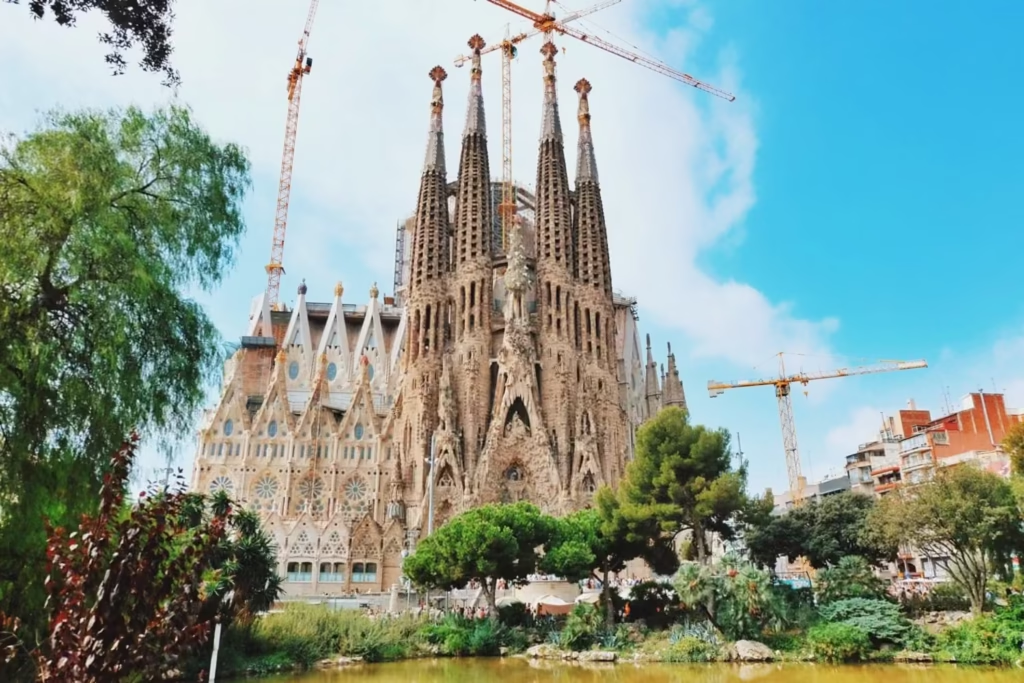
No visit to Barcelona is complete without experiencing the awe-inspiring creations of Antoni Gaudí, the city’s most celebrated architect. His distinctive Catalan Modernist style is evident throughout Barcelona, transforming the urban landscape into a whimsical and dreamlike realm.
The Basílica de la Sagrada Familia stands as Gaudí’s magnum opus and the undisputed number one attraction in Barcelona . This stunning, still-unfinished basilica is a testament to his genius, blending nature, light, and religious symbolism into an architectural marvel . Its soaring spires dominate the city skyline, promising to become the world’s tallest church upon its anticipated completion in 2026 . The intricate facades and the light-filled interior, reminiscent of a forest canopy, leave visitors in awe . To fully appreciate this iconic landmark, exploring the subterranean museum is highly recommended . Given its immense popularity, securing tickets well in advance is essential to avoid disappointment .
Another of Gaudí’s fantastical creations is Park Güell, a public park that feels like stepping into a fairytale . Originally conceived as a housing development, this park on Carmel Hill offers breathtaking panoramic views of the city and the sea . Its iconic mosaic benches, the whimsical salamander statue, and the undulating architectural elements showcase Gaudí’s unique vision . Similar to the Sagrada Familia, entry to the Monumental Zone of Park Güell now requires a ticket, and booking in advance is strongly advised due to limited hourly admission .
Located on the prestigious Passeig de Gràcia, Casa Batlló is another spectacular example of Gaudí’s Modernist brilliance . Its facade, inspired by the legend of Saint George and the dragon, features vibrant colors, organic shapes, and intricate details that captivate the eye . Known locally as the “House of Bones” due to its skeletal appearance, Casa Batlló is a UNESCO World Heritage site and a must-see for architecture enthusiasts .
Further down Passeig de Gràcia stands La Pedrera, also known as Casa Milà, another of Gaudí’s iconic buildings . Its rugged, quarry-like facade gives it its nickname, while its undulating lines and wrought-iron balconies evoke the movement of the sea . The surreal rooftop sculptures and the panoramic city views from the terrace are particularly noteworthy . For a different perspective, consider experiencing the “La Pedrera Night Experience,” which includes a nighttime tour and an audiovisual show on the rooftop .
Beyond Gaudí’s masterpieces, Las Ramblas is an unmissable landmark . This famous boulevard stretches from Plaça de Catalunya to the Columbus Monument at Port Vell, offering a vibrant mix of shops, flower stalls, street performers, and attractions . Along its lively promenade, visitors will find the ornate Canaletes fountain, the renowned Boqueria Market, and the historic Gran Teatre del Liceu opera house . Historically, Las Ramblas was a sandy riverbed, a vestige of Barcelona’s past .
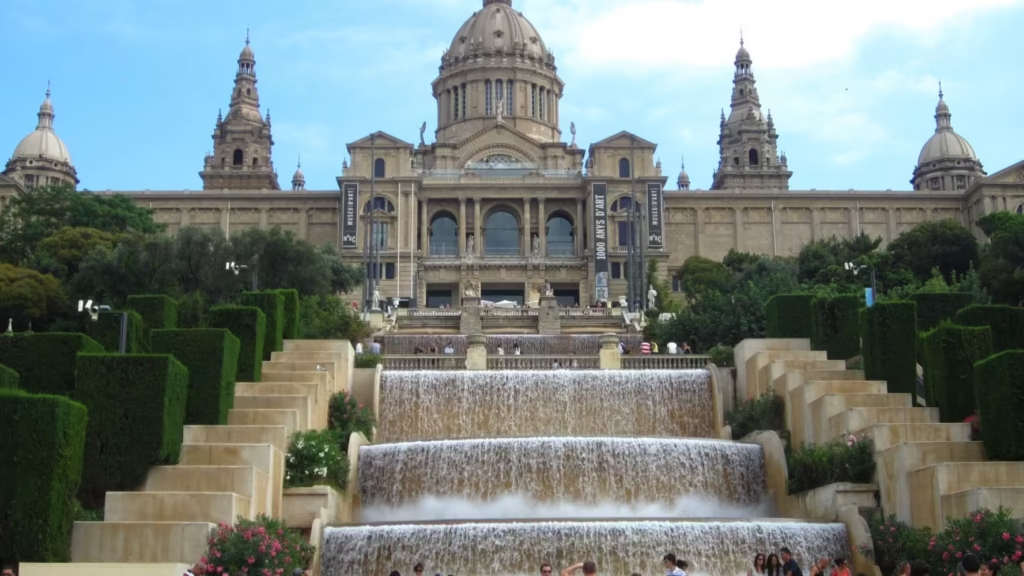
Dominating the city’s skyline from a different vantage point is Montjuïc, a coastal hill offering a treasure trove of attractions and some of the best views of Barcelona . Visitors can explore Montjuïc Castle, the Olympic Stadium, the Botanical Gardens, and the Joan Miró Foundation . A ride on the Montjuïc cable car provides sensational city views as you ascend the hill . On the other side of the hill, Poble Espanyol and the Museu Nacional d’Art de Catalunya (MNAC) await, along with the captivating Magic Fountain of Montjuïc, famous for its spectacular water and light shows .
The sheer concentration of Gaudí’s architectural wonders underscores his profound influence on Barcelona’s identity and its magnetic pull for tourists . His unique style and innovative engineering have left an indelible mark on the city’s landscape . Given the popularity of these sites, especially during peak season, planning ahead and booking tickets in advance is highly recommended to maximize your time and avoid long queues . Many of these key attractions offer more than just a visual experience; for instance, the Sagrada Familia has a museum in its basement, and La Pedrera offers nighttime visits, providing deeper engagement opportunities for visitors .
Immersing Yourself in Barcelona’s Rich Culture
Barcelona’s cultural tapestry is as rich and diverse as its architectural landscape, offering a wealth of museums, historical sites, and artistic expressions to explore.
Art lovers will find themselves spoiled for choice with Barcelona’s numerous museums. The Picasso Museum, located in the El Born district, houses an extensive collection of over 4,000 works by Pablo Picasso, focusing on his formative years and showcasing his artistic evolution . Given its popularity, reserving tickets in advance or opting for a guided tour is advisable .
The Museu Nacional d’Art de Catalunya (MNAC), situated in the Palau Nacional on Montjuïc, provides an excellent overview of Catalan art from the 12th to the 20th centuries . Its impressive Romanesque collection and Modernista art are particularly noteworthy, and visitors can enjoy free entry on Saturdays from 3 pm and on the first Sunday of each month.
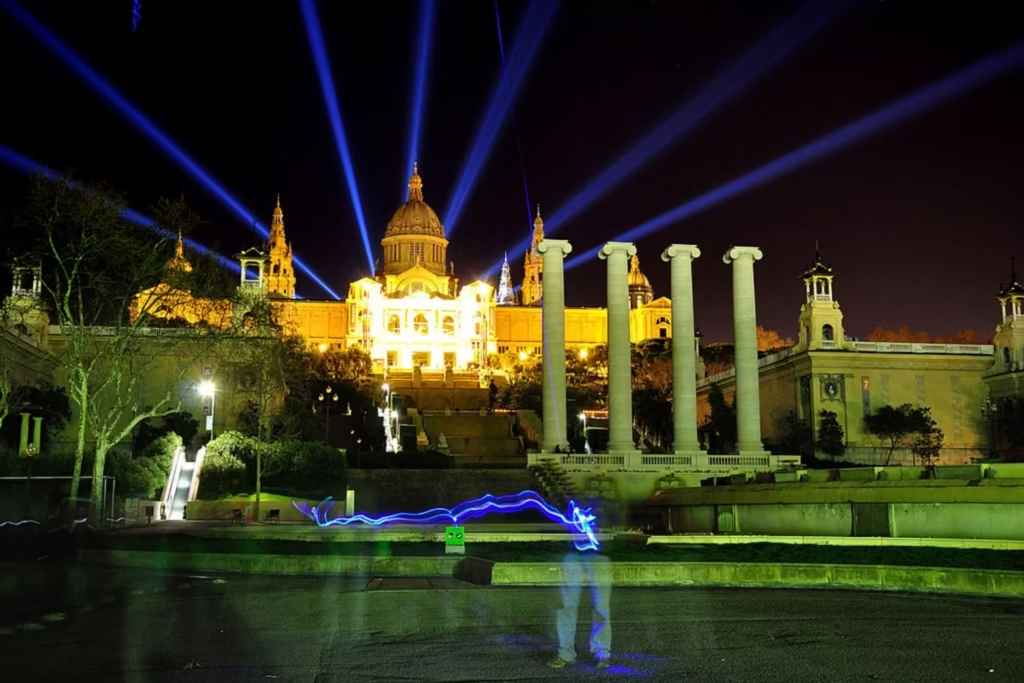
For those interested in contemporary art, the Barcelona Museum of Contemporary Art (MACBA) in the Raval district houses a significant collection of post-World War I art, with a focus on Catalan and Spanish artists alongside international temporary exhibitions . Other notable museums include the Fundació Joan Miró, the CosmoCaixa Museum of Science, the Museu Marítim de Barcelona, and the Design Museum of Barcelona, catering to a wide range of interests . For avid art enthusiasts, the Barcelona Museum Pass (Articket) offers access to several of the city’s major art museums .
Wandering through the Gothic Quarter (Barri Gòtic) is like stepping back in time . This historical heart of Barcelona is characterized by its narrow, winding streets, picturesque squares like Plaça Reial and Plaça Sant Jaume, and well-preserved medieval architecture . The magnificent Barcelona Cathedral, a Gothic masterpiece dating back to the 14th century, is a focal point of this area .
The Palau de la Música Catalana stands as a stunning example of Art Nouveau architecture and a UNESCO World Heritage site . This concert hall is renowned for its breathtaking interior, particularly the main auditorium with its stained glass ceiling and inverted golden dome . Reasonably priced self-guided tours offer an opportunity to admire its architectural splendor .
Beyond the well-known landmarks, Barcelona holds historical treasures from different eras. The remains of Roman Barcelona, known as Barcino, can still be discovered throughout the city, offering glimpses into its ancient past . The Basilica of Santa Maria del Mar in the Ribera district is considered a prime example of Catalan Gothic architecture .
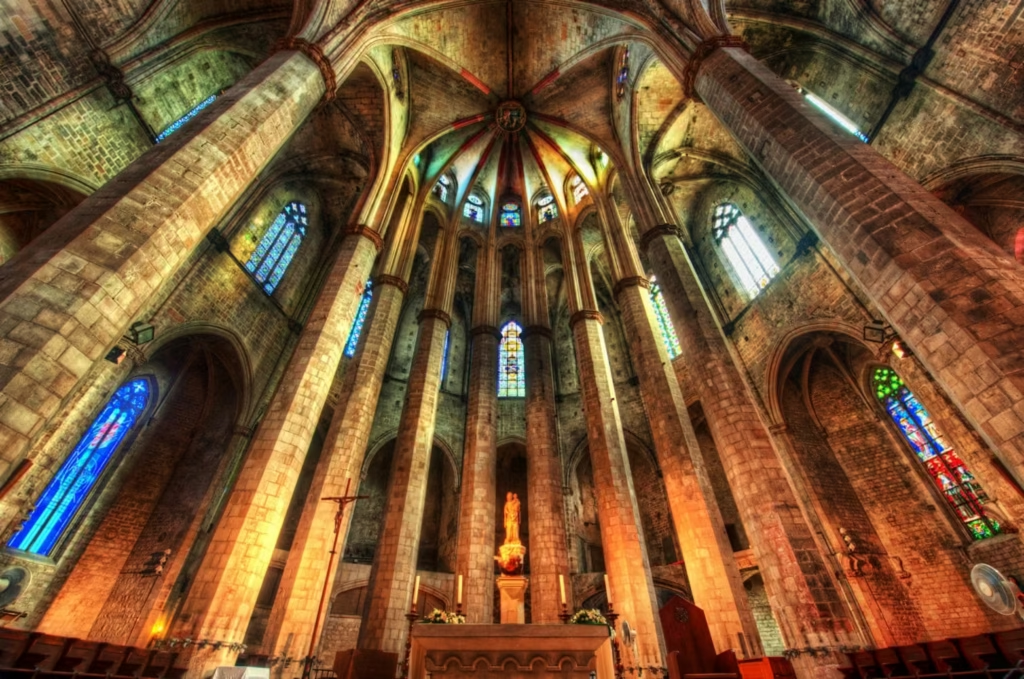
The Hospital de Sant Pau, designed by Lluís Domènech i Montaner, is the largest Modernist architectural complex in Europe and a UNESCO World Heritage site, showcasing the beauty of function meeting form . Finally, Poble Espanyol on Montjuïc offers a unique experience by recreating emblematic architecture from different regions of Spain, providing a condensed journey through the country’s diverse architectural styles .
Barcelona’s cultural landscape reveals a city with deep historical roots, spanning from Roman settlements to the Gothic period and the flourishing of Catalan Modernism . While Gaudí is a central figure, the city boasts other significant contributors to the Modernist movement, such as Lluís Domènech i Montaner and Josep Puig i Cadafalch, whose works like the Hospital de Sant Pau and Casa Amatller are equally impressive . For budget-conscious travelers, it’s worth noting that several major museums, including the MNAC and the Picasso Museum, offer free entry on specific days or times, making culture accessible to all .
A Gastronomic Adventure in Barcelona
Barcelona is a culinary paradise, offering a delightful array of flavors and dining experiences that reflect both its Catalan identity and its Spanish heritage.

Visitors should not miss the opportunity to savor some of the popular local dishes. While paella is a quintessential Spanish rice dish originating from Valencia, it is widely enjoyed in Barcelona, particularly the seafood paella, brimming with fresh catches from the Mediterranean . Tapas, small savory dishes, are a cornerstone of Barcelona’s food scene. Must-try tapas include patatas bravas, crispy fried potatoes with spicy sauce and aioli, bombas, breaded potato balls filled with meat and served with spicy sauce, and croquetas, creamy fried rolls with various fillings like ham or cheese .
For dessert, crema catalana, a Catalan version of crème brûlée, is a rich and satisfying choice . Other local specialties include fideuà, a noodle-based dish similar to paella, pa amb tomàquet, simple yet delicious bread rubbed with tomato, escalivada, grilled vegetables, and calçots with romesco sauce, grilled green onions enjoyed during the winter calçotada season . Food lovers should also indulge in jamón ibérico, a renowned Spanish cured ham .
Exploring Barcelona’s vibrant food markets is an essential part of the gastronomic experience. La Boqueria, officially known as Mercat de Sant Josep, is one of the world’s best fresh-food markets and a true icon of Barcelona . Located on La Rambla, this bustling market offers a dazzling array of fresh produce, seafood, meats, and local delicacies . Its history dates back to the 13th century, and its main entrance features stunning Catalan Art Nouveau architecture . Beyond shopping for ingredients, visitors can also enjoy delicious meals at the numerous restaurants and food stalls within the market .
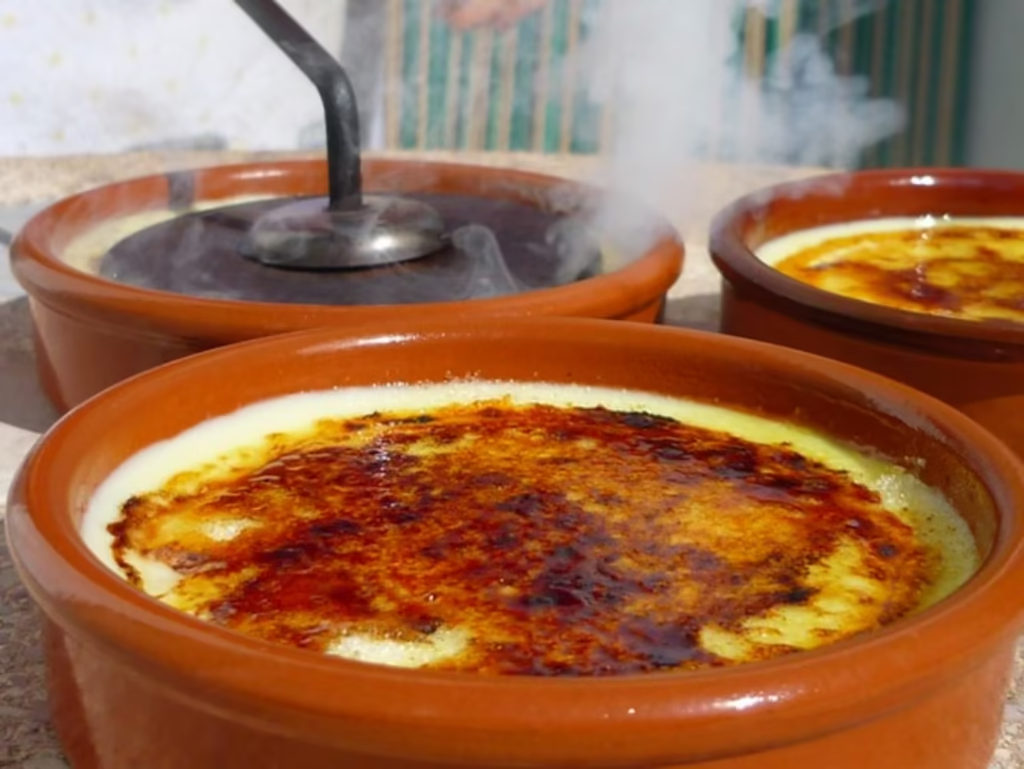
Mercat de Sant Antoni offers a more local and less crowded atmosphere, with fresh food stalls and a book market on Sundays . Mercat de la Concepció is particularly famous for its beautiful flower stalls, open 24 hours a day . Other notable markets worth exploring include Mercat de Santa Caterina, Mercat del Ninot, and Mercat d’Hostafrancs, each offering a unique glimpse into Barcelona’s local food culture .
For dining experiences, Barcelona offers everything from traditional tapas bars serving authentic Catalan cuisine to Michelin-starred restaurants for a more refined gastronomic adventure .
It’s important to recognize the distinction between Catalan and Spanish cuisine, as Barcelona proudly showcases its own culinary heritage . Dishes like fideuà, pa amb tomàquet, escalivada, and calçots are integral to the Catalan culinary identity . Barcelona’s markets are not just places to buy food; they are vibrant social and cultural hubs where locals and tourists alike gather to experience the city’s culinary heart . Additionally, some Catalan dishes, such as calçots, are seasonal, highlighting the importance of fresh, local ingredients and adding a unique temporal dimension to the dining experience .
Finding Your Ideal Accommodation in Barcelona
Barcelona offers a wide range of accommodation options to suit every traveler’s needs and budget, from luxurious hotels to cozy apartments and charming bed & breakfasts.
Hotels in Barcelona
For those seeking a traditional hotel experience, Barcelona boasts numerous options. Luxury hotels like the Grand Hyatt and W Barcelona offer top-notch amenities and services . Many hotels are conveniently located near key attractions, such as the Sercotel Hotel Rosellon near the Sagrada Familia, or in popular neighborhoods like the Hotel Barcelona Center in Eixample .
Apartments in Barcelona
Rental apartments provide a more independent and often spacious accommodation option, suitable for both short and long-term stays. Platforms like Lucas Fox, HousingAnywhere, Idealista, The Blueground, and Spotahome offer a wide selection of apartments in various neighborhoods, including the Gothic Quarter, Eixample, and Gràcia.
Bed & Breakfasts (B&Bs) offer a more intimate and personalized experience, often providing local insights and a home-like atmosphere. Options like Uma Suites Pau Claris and The Conica Deluxe Bed&Breakfast in Eixample, and Verdi 254 in Gràcia, are highly rated .
Airbnb has become a popular choice for travelers seeking unique and varied accommodation options. From apartments and penthouses with stunning views to villas with private pools and even unconventional stays like yacht hotels, Airbnb offers a plethora of choices in neighborhoods across Barcelona .
When choosing accommodation, considering the location is crucial. The Gothic Quarter offers historic charm, Eixample is known for its modernist architecture and central location, Gràcia has a bohemian vibe, and Barceloneta provides easy access to the beach .
The sheer abundance of accommodation choices in Barcelona ensures that most visitors will find something that suits their preferences and budget . Location plays a significant role for travelers, with proximity to attractions or the desired neighborhood atmosphere being key considerations . The increasing popularity of apartment and Airbnb rentals reflects a growing preference for more space, amenities, and a potentially more local experience compared to traditional hotels .
Experiencing the Vibrancy of Barcelona’s Recurring Events
Barcelona’s calendar is filled with a diverse array of festivals and events throughout the year, reflecting its lively spirit and rich cultural traditions.
One of the most beloved annual events is Sant Jordi on April 23rd, a day when Barcelona transforms into a romantic haven with streets filled with stalls selling roses and books . This Catalan tradition celebrates love and literature, with couples often exchanging these symbolic gifts . In September, La Mercè takes center stage as the city’s largest festival, honoring Barcelona’s patron saint . This multi-day celebration features spectacular human tower performances (castellers), vibrant parades, captivating fireworks displays, and a wide range of cultural activities .
Music enthusiasts flock to Barcelona in June for the Sonar Festival, a renowned international festival dedicated to electronic music, multimedia art, and urban culture . Similarly, Primavera Sound, held in May or June, attracts indie rock fans from around the globe . During the summer, the Festa Major de Gràcia in August is a highlight, with different streets in the Gràcia district competing to have the most creatively decorated themes . The night of Sant Joan on June 23rd marks the summer solstice with bonfires, fireworks, and lively celebrations across the city .
Throughout the year, Barcelona also hosts a variety of seasonal events. Carnival, held in February or March, brings colorful parades, costumes, and street parties to the city before Lent . During the winter months, visitors can experience the charm of Christmas markets like Fira de Santa Llúcia and Fira de Nadal de la Sagrada Familia . The arrival of winter also heralds the calçotada season, where locals and visitors indulge in grilled calçots with romesco sauce.
Beyond these major events, Barcelona offers a rich calendar of recurring cultural activities. The Gran Teatre del Liceu hosts a prestigious opera season, while the Palau de la Música Catalana is renowned for its symphony season . Jazz aficionados can enjoy the Barcelona International Jazz Festival, which runs from October to March . The city also boasts numerous venues offering passionate flamenco shows . For those looking to connect with locals, language exchange events are a regular occurrence . Poetry lovers can explore events like Barcelona Poesia and Setmana de la Poesia, celebrating the city’s literary scene .
The sheer number and variety of festivals and events demonstrate that Barcelona is a city that thrives on celebration and cultural expression throughout the year . This creates a vibrant atmosphere for visitors regardless of when they choose to travel. The city seamlessly blends deeply rooted traditions with contemporary international festivals, catering to a wide spectrum of interests . Beyond the major city-wide celebrations, numerous local district festivals offer a more intimate glimpse into Barcelona’s community spirit during the summer months .
Conclusion: Making the Most of Your Barcelona Visit
Barcelona is a city that truly has it all, from the architectural wonders of Gaudí and the historical charm of the Gothic Quarter to the delectable Catalan cuisine and the vibrant array of year-round festivals. Whether you are captivated by modernist masterpieces, eager to explore ancient streets, keen to savor local flavors, or looking to immerse yourself in lively cultural events, Barcelona promises an unforgettable experience.
To make the most of your visit, planning ahead, especially for popular attractions and during peak season, is highly recommended. Consider the time of year to align your trip with specific festivals or to enjoy the pleasant Mediterranean weather. Barcelona’s diverse offerings ensure that every traveler can discover their own unique wonders in this captivating Spanish city.
